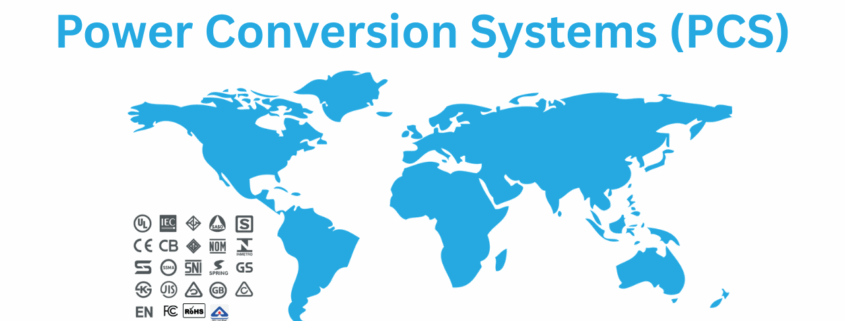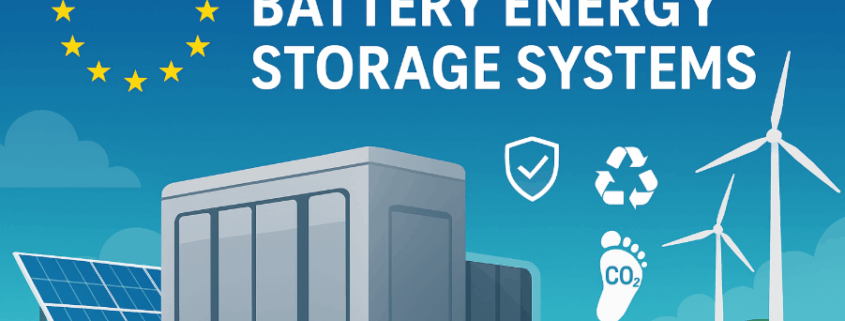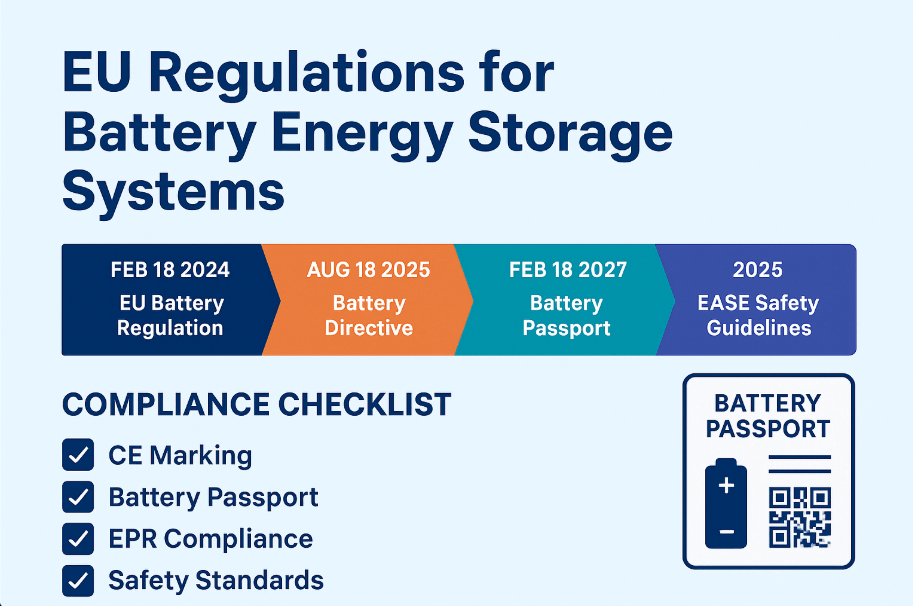IEC 62933: Global Standard for Grid Energy Storage Systems
As renewable energy adoption grows, energy storage systems (ESS) have become critical for balancing supply and demand, improving reliability, and supporting grid resilience. To ensure safety, performance, and interoperability, the International Electrotechnical Commission (IEC) developed the IEC 62933 series, a set of globally recognized standards.
These standards guide manufacturers, developers, and policymakers in designing and deploying safe, efficient, and sustainable storage solutions.
What is IEC 62933?
The IEC 62933 series establishes a framework for electrical energy storage (EES) systems, including grid-scale and commercial applications. It covers general requirements, safety, performance, environmental considerations, and grid integration.
Rather than being a single document, IEC62933 is a family of interlinked standards, each addressing a specific aspect of EES.
Breakdown of Key IEC 62933 Standards

Here’s a detailed overview of the most important parts:
1. IEC 62933-1 – General Requirements
- Defines basic concepts, classifications, and terminology for EES.
- Provides common ground for stakeholders (manufacturers, regulators, utilities).
- Establishes a systematic approach to planning, designing, and evaluating ESS.
2. IEC 62933-2-1 – Performance Testing for EES Systems
- Sets methods to evaluate performance of storage systems.
- Covers energy efficiency, response time, storage capacity, and life cycle.
- Ensures consistent benchmarks for comparing technologies.
3. IEC TS 62933-2-2 – Functional Safety Assessment
- A Technical Specification (TS) focusing on safety from a system function perspective.
- Addresses potential hazards (thermal runaway, electrical failures).
- Provides methods for risk identification and mitigation.
4. IEC TS 62933-2-3 – Reliability of Energy Storage Systems
- Defines testing and assessment methods for reliability.
- Covers failure rates, durability, and long-term system resilience.
- Helps ensure stable operation in grid-critical applications.
5. IEC TR 62933-2-201 – Guidance on Safety Cases
- A Technical Report (TR) providing practical guidance for ESS safety cases.
- Supports developers and operators in building safety documentation.
- Bridges the gap between technical standards and real-world applications.
6. IEC 62933-4-2 – Environmental Impact of EES Systems
- Focuses on environmental assessment of energy storage technologies.
- Considers carbon footprint, material use, and recycling practices.
- Encourages sustainable deployment of large-scale ESS.
7. IEC 62933-4-4 – End-of-Life Management
- Provides guidelines for decommissioning, recycling, and disposal of EES.
- Promotes circular economy practices in the storage industry.
- Reduces environmental risks associated with battery waste.
8. IEC 62933-5-1 – General Safety Considerations
- Covers general safety requirements for stationary energy storage.
- Includes electrical, chemical, mechanical, and fire safety aspects.
- Ensures system safety across all technologies (batteries, flywheels, etc.).
9. IEC 62933-5-2 – Safety for Large-Scale EES
- Focuses specifically on large battery energy storage systems (BESS).
- Addresses thermal runaway prevention, emergency response, and system protection.
- Critical for utility-scale storage projects.
10. IEC 62933-5-3 – Grid Integration Safety
- Examines safety aspects during grid connection and operation.
- Ensures ESS does not destabilize or endanger grid infrastructure.
- Supports secure deployment in smart grids and microgrids.
Importance of IEC 62933 for the Industry
The IEC 62933 series provides:
- Global Standardization – unifies practices worldwide.
- Risk Reduction – prevents failures in high-risk ESS installations.
- Sustainability – ensures safe end-of-life handling.
- Investor Confidence – promotes compliance and long-term reliability.
- Innovation Support – enables safe integration of emerging technologies like solid-state and hybrid storage.
Conclusion
The IEC62933 standard family is the backbone of global energy storage deployment. From general guidelines (IEC62933-1) to detailed safety (IEC62933-5-2) and environmental sustainability (IEC62933-4-4), it ensures storage systems are safe, efficient, and future-ready.
Adopting these standards is essential for manufacturers, developers, and regulators who aim to accelerate the clean energy transition while ensuring safety and reliability.





